Section by Section
With an eye towards learning to ring Surprise Methods on the higher numbers, the 6 sections, each with a follow-on cross-section, are detailed below.
This level of splitting is documented in the Bill Jackson articles (see
Download
page).
|
Section 1, 1-2 Up.
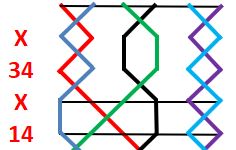
Section 2, 3-4 Up.
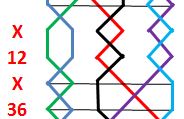
Section 3, 5-6 Up.
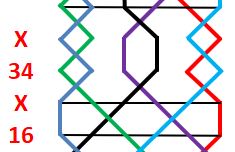
Section 4, 5-6 Down.
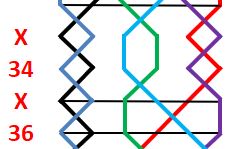
Section 5, 3-4 Down.
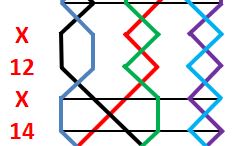
Section 6, 1-2 Down.
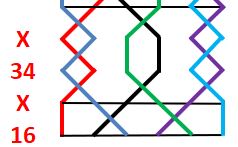
|
Learning by Sections
-
Memorise treble position and structure (either numerically or visually as you prefer), for each section.
Perfect your memory of the structure of each of the 6 sections before moving to the next step.
- Take each pair of bells at the starting point for section 1, and working in handstroke / backstroke couplets
- work through their positions using thumbs up for handstroke, thumbs down for backstroke
- keep your thumbs in the correct order for the bells inside the changes
- note their position at the end of the section
-
Repeat the process for each of the sections but using the new starting points for the pair.
Ensure you can navigate your thumbs correctly through all 18 combinations of pairs (3) and sections (6) for all 5 leads of the plain course.
- NB. Whilst similarities of the place notation elements make it easy to get lost this technique uses the unique work of the treble in each section as an aid to memory.
|
Example exercise: Pair: 3-4, section 1
Counting: (start with one whole pull of rounds)
1, 2, 3 Right thumb up, 4 Left thumb up, 5, 6
1, 2, 3 Right thumb down, 4 Left thumb down, 5, 6
Treble: 1-2 Up:
Cross
1, 2, 3 Left thumb up, 4 Right thumb up, 5, 6
3rds and 4ths
1, 2, 3 Left thumb down, 4 Right thumb down, 5, 6
Cross
1, 2, 3 Right thumb up, 4 Left thumb up, 5, 6
1st & 4ths
1, 2 Right thumb down, 3, 4 Left thumb down, 5, 6
Example exercise: Pair: 5-6, section 4
Counting: (start from crossing in 4-5 at backstroke at the half lead 243561)
Treble: 5-6 Down:
Cross
1, 2, 3 Right thumb up, 4, 5, 6 Left thumb up
3rds and 4ths
1, 2, 3 Right thumb down, 4, 5 Left thumb down, 6
Cross
1, 2, 3, 4 Right thumb up, 5, 6 Left thumb up
3rds & 6ths
1, 2, 3, 4, 5 Right thumb down, 6 Left thumb down
|

